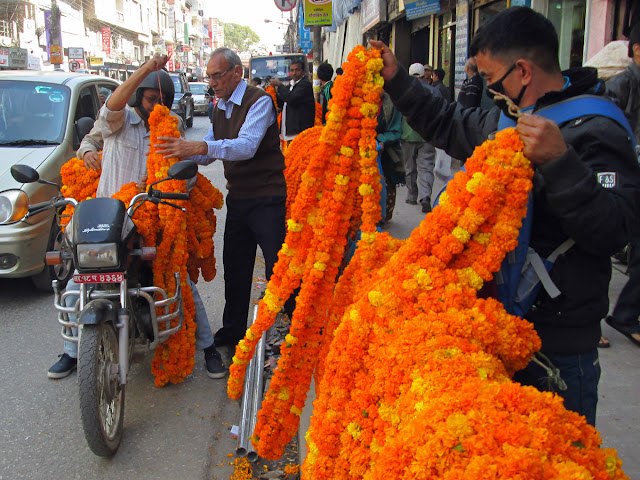There are a few different calendars in Nepal and sometimes I need to use the Nepali calendar, such as for paying my phone bill. According to the Newari calendar, Wednesday, November 14th was the beginning of the year 1133.
My friend and I went to Durbar Square early on Wednesday to see a New Year celebration. The rally began around 8am, with different school and family groups marching though Basantapur. Women and men were dressed in traditional clothing and many people played drums or flutes.
My friend and I went to Durbar Square early on Wednesday to see a New Year celebration. The rally began around 8am, with different school and family groups marching though Basantapur. Women and men were dressed in traditional clothing and many people played drums or flutes.
After everyone had paraded hrough Durbar Square, there was also a motorcycle rally with vehicles traveling on a route around the city centers of Kathmandu, Lalitpur and Bhaktapur. My friend told me that this year there were fewer motorcycles than before...I mainly saw decorated cars and trucks!













































